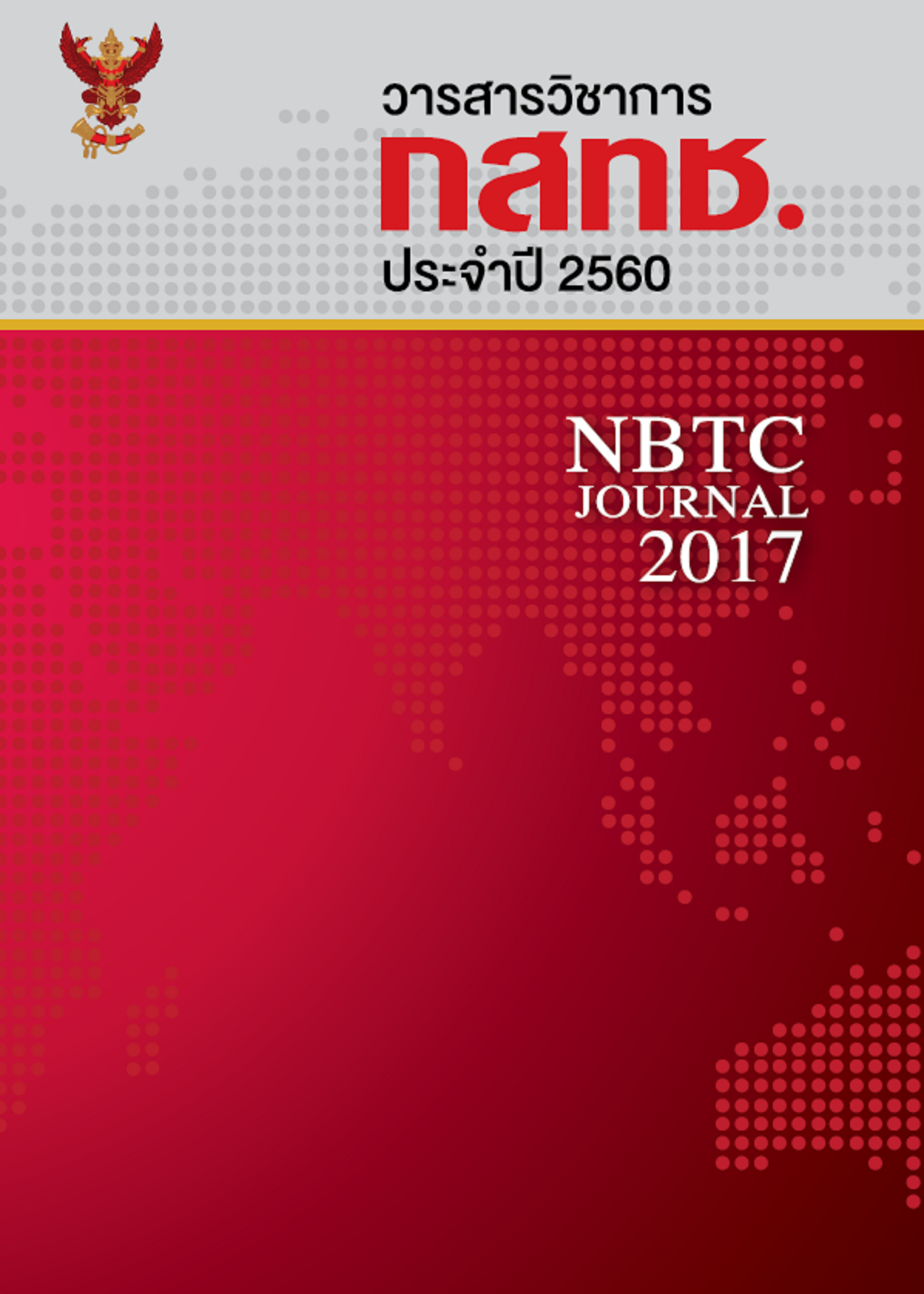ความท้าทายของดิจิทัลทีวีไทยในยุคการเปลี่ยนแปลงพฤติกรรมในการใช้ประโยชน์จากสื่อโสตทัศน์ของประชาชน
Keywords:
digital tv, media-use behavior of people, audiovisual mediaAbstract
The article “Challenges of Thai Digital TV in the Era of Changing in People’s Behavior on Audiovisual Media Use” aimed to collect data about the change of television broadcasting in order to analyze challenges faced by digital television broadcasters and to develop concepts and views on adapting themselves in the changing situation. This article, therefore, demonstrated the challenges of early-stage television until the digital TV era. Challenges were explored in various areas, starting with 1) challenge the public to see the importance and change to receive the digital TV 2) challenge in persuading public of converting digital TV via terrestrial mean 3) challenge in competition with the large number of services, businesses and information such as satellite channels, cable televisions and audiovisual media via the Internet 4) challenge caused by media behavior of people with the fact that "Television does not attract all of us anymore" because they used other communication tools at the same time also known as a Multi-screen Lifestyle. So, the digital television was filled with opportunities, challenges that not only depended on the behavior of people but also on other factors, such as the management of their own channels and state policies were equally important.
References
กรมประชาสัมพันธ์. (2554). จาก กกช. สู่ กสทช.. เอกสารขององค์กร.
ตรี บุญเจือ. (2558). คนพิการกับการเข้าถึงเทคโนโลยีสื่อสารด้านกิจการกระจายเสียงและโทรทัศน์เพื่อการพัฒนาคุณภาพชีวิต:
การศึกษาเชิงวิเคราะห์ วิจักษ์ และวิธาน. ดุษฎีนิพนธ์. มหาวิทยาลัย ราชภัฏสวนสุนันทา
สถาบันวิจัยและพัฒนาองค์กรภาครัฐ, มูลนิธิ. (2558). รายงานฉบับสมบูรณ์โครงการศึกษาแนวทางในการจัดเก็บข้อมูลพฤติกรรม
การใช้บริการกิจการกระจายเสียงและกิจการโทรทัศน์. เสนอต่อ สำนักงาน กสทช. เอกสารขององค์กร.
สำนักงาน กสทช.. (ม.ป.ป.). รายงานการวิเคราะห์อุตสาหกรรมกิจการกระจายเสียงและโทรทัศน์. เอกสารขององค์กร.
สำนักงาน กสทช.. (2558). ดิจิตอลทีวี. [เว็บไซต์หน่วยงาน]. สืบค้นจาก https://digital.nbtc.go.th.
Deliriant Isti Romani. (2554). Government Regulator Admits Inability to Keep Pace with Media Convergence. สืบค้น
จาก https://deliriantistiromani.wordpress.com/2011/ 08/30/government-regulator-admits-inability-to-keep-pace-
with-media-convergence.
Google. (2555). The New Multi-screen World: Understanding Cross-Platform Consumer Behavior. [บทความออนไลน์].
สืบค้นจาก https://www.thinkwithgoogle.com/advertising-channels/mobile/ multi-screen-world-infographic.
Marketing Oops!. (2560). คาดการณ์เม็ดเงินโฆษณาทั่วโลกในปี 2017 แบ่งตามประเภทสื่อและภูมิภาคต่างๆ. [บทความ
ออนไลน์]. สืบค้นจาก https://www.marketingoops.com/reports/media-stat/global-advertising-forecast-for-2017.
NTT Technical Review. (ม.ป.ป.). System LSIs for Digital Broadcasting Applications.[บทความออนไลน์]. สืบค้นจาก
https://www.ntt-review.jp/archive/ntttechnical.php? contents=ntr 200710le1.html.
Positioning (1). (2559). เม็ดเงินโฆษณา ครึ่งปี ’59 ยังซบ ใช้ไป 5.5 หมื่นล้านบาท ติดลบ 7.8%. [บทความออนไลน์]. สืบค้น
จาก https://positioningmag.com/1097145.
Positioning (2). (2560). เม็ดเงินโฆษณา ครึ่งปี’60 ยังวูบต่อ 5.2 หมื่นล้านบาท ติดลบ 7%, [บทความออนไลน์]. สืบค้นจาก
https://positioningmag.com/1132288.
Positioning (3). (2560). ปาดเหงื่อ ! คาดเม็ดเงินโฆษณาปี’60 วูบติดลบ 10-15% แบรนด์ตัดงบทีวีอ่วมดัมพ์ราคาโฆษณา 80%.
[บทความออนไลน์]. สืบค้นจาก https://positioningmag.com/1129192.
Roy Morgan. (2557). Average Weekly Time Spent with Media in Thailand in 2014, by Types (in Hours). [บทความ
ออนไลน์]. สืบค้นจาก https://www.statista.com/statistics/670568/ thailand-average-time-spent-with-media-per-
week.
Techbook. (2553). Brief discussion about one of man made wonder: Mobile phone…. [บทความออนไลน์]. สืบค้นจาก
https://techbook.co.in/brief-discussion-about-one-of-man-made-wonder-mobile-phone.
Telecom Basics. (2558). PMP – (Point to Multipoint). [บทความออนไลน์]. สืบค้นจากhttps://t-e-l-e-c-o-
m.blogspot.com/2015/05.
Downloads
Published
How to Cite
Issue
Section
License
The Office of the NBTC holds the copyright of articles appearing in the journal. The Office of the NBTC allows the public or individuals to distribute, copy, or republish the work under a Creative Commons license (CC), with attribution (BY), No Derivatives (ND) and NonCommercial (NC); unless written permission is received from the Office of the NBTC.
Text, tables, and figures that appear in articles accepted for publication in this journal are personal opinion and responsibility of the author, and not binding on the NBTC and the Office of the NBTC. In case of errors, each author is solely responsible for their own article, and not concerning the NBTC and the NBTC Office in any way.



